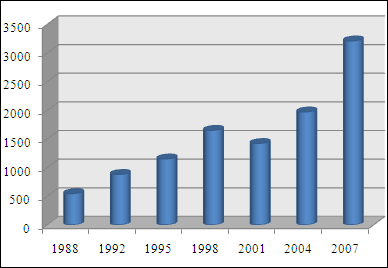By Anthony Innarino,
It won’t be easy, and it won’t make you popular, but here are seven tests to ensure that your sales forecasts will come true. By asking these questions, you'll do more than improve your forecast accuracy. You will change behaviors.
1. Check for a Compelling Reason Why
If you want to ensure that your sales forecast is real, you begin by asking one simple question: “What is the compelling reason that this perspective client is going to buy?” This is the first test because without a compelling reason to buy, the prospective client opportunity in your pipeline cannot be forecast. If the answer is soft, so is the opportunity.
2. Check for Honest Closing Dates
If the close date on an opportunity is March 31, June 30, September 30, or December 31, they should not be forecast. These are sales rep dates, not client or buyer dates. Buyers aren't worried about closing on the quarters end.
3. Check for Differentiation
How is your solution different from your competitors in a way that makes a difference for this perspective client? Why should this prospective client choose you over all others or their business? The answer to this question will give you some indication as to your real chance of winning. Plus, it’s a more honest number than the percentage likelihood in your sales force automation.
4. Check for the Right Stakeholders
Decisions are made by consensus. If the forecasted opportunity has only one sponsor, is lacking executive sponsorship, or is made up of stakeholders who clearly lack the authority to bind the organization to a deal, it needs to come out of your forecast. That is, at least until you go back and collect the relationships with the stakeholders in order to win the opportunity.
5. Check the Sales Process
Unless and until you test every opportunity to verify that it is in the appropriate stage in your sales process, it can’t be forecast. It’s easy to skip stages in the sales process because the client is anxious to move forward, especially when they want a proposal and pricing. But the fact that the client wants a proposal or pricing is no indication that the appropriate needs analysis has been done, that the appropriate solution has been designed, or that it is the right time for you to present pricing for a proposal. You only want to forecast opportunities that are in the appropriate stage of your sales process.
6. Check the Value of the Solution
Just how valuable is your solution? Is the solution going to make an enormous difference in the results of this prospective client? Even though a forecasting meeting is not the right meeting to do an opportunity review, you need to deliver the greatest value to prospective clients if you want to improve the integrity of your pipeline.
7. Check the Commitments
One really simple way to ensure that an opportunity can be forecast is to check the commitments. The question you might consider asking is, “What is the next step that this perspective client has agreed to take with us?” If there is no concrete, verifiable commitment to take the next step, you cannot forecast the opportunity with any confidence.

